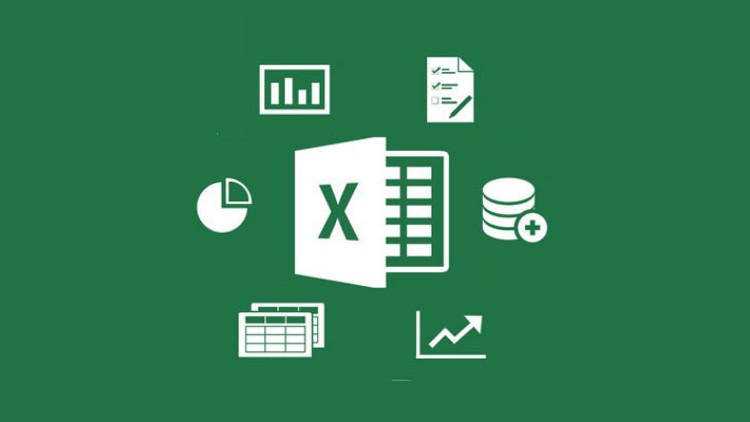
Master the Basics and Fundamentals of Microsoft Excel!
☑ A Beginner’s Guide to Microsoft Excel – Microsoft Excel, Learn Excel, Spreadsheets, Formulas, Shortcuts, Macros
☑ Microsoft Excel Essentials
☑ From the fundamentals, to the most advanced features, this training covers everything you need to know about Excel
☑ Solid understanding of Microsoft Excel
Microsoft Excel is the spreadsheet application in the MS Office suite. Get help organizing and calculating data in this Excel tutorial.
Microsoft Excel has the basic features of all spreadsheets,[6] using a grid of cells arranged in numbered rows and letter-named columns to organize data manipulations like arithmetic operations. It has a battery of supplied functions to answer statistical, engineering, and financial needs. In addition, it can display data as line graphs, histograms and charts, and with a very limited three-dimensional graphical display. It allows sectioning of data to view its dependencies on various factors for different perspectives (using pivot tables and the scenario manager). A PivotTable is a powerful tool that can save time in data analysis. It does this by simplifying large data sets via PivotTable fields It has a programming aspect, Visual Basic for Applications, allowing the user to employ a wide variety of numerical methods, for example, for solving differential equations of mathematical physics, and then reporting the results back to the spreadsheet. It also has a variety of interactive features allowing user interfaces that can completely hide the spreadsheet from the user, so the spreadsheet presents itself as a so-called application, or decision support system (DSS), via a custom-designed user interface, for example, a stock analyzer, or in general, as a design tool that asks the user questions and provides answers and reports. In a more elaborate realization, an Excel application can automatically poll external databases and measuring instruments using an update schedule, analyze the results, make a Word report or PowerPoint slide show, and e-mail these presentations on a regular basis to a list of participants. Excel was not designed to be used as a database.
Excel supports charts, graphs, or histograms generated from specified groups of cells. It also supports Pivot Charts that allow for a chart to be linked directly to a Pivot table. This allows the chart to be refreshed with the Pivot Table. The generated graphic component can either be embedded within the current sheet or added as a separate object.
These displays are dynamically updated if the content of cells changes. For example, suppose that the important design requirements are displayed visually; then, in response to a user’s change in trial values for parameters, the curves describing the design change shape, and their points of intersection shift, assisting the selection of the best design.
- Master the ESSENTIAL Excel formulas and features to accelerate your career
- Learn Excel from scratch or fill in the gaps to become immediately confident
- Learn to use Pivot Tables, Pivot Charts, Slicers and Time Lines for Interactive Excel Reports
- Automate and Customize data entry forms
- Choose the right Loop for each task
- Master the CELLS and RANGE objects in multiple scenarios
- Be a Confident & Advanced Microsoft Excel user
- Able to solve complex problems in Excel
- Learn new techniques and formulas to tackle tasks faster and better in Excel
English
Language
Microsoft Excel
Introduction to Excel
Working with Workbook
Creating table in Spreadshit
Working with tables
Insert and Delete Rows and Columns
Sorting data in table
Using math formula
Calculating sum using wizard
Calculating average
Filtering table data
Setting style to table
More on formulas
Find and replace
Chart
Page setup and print